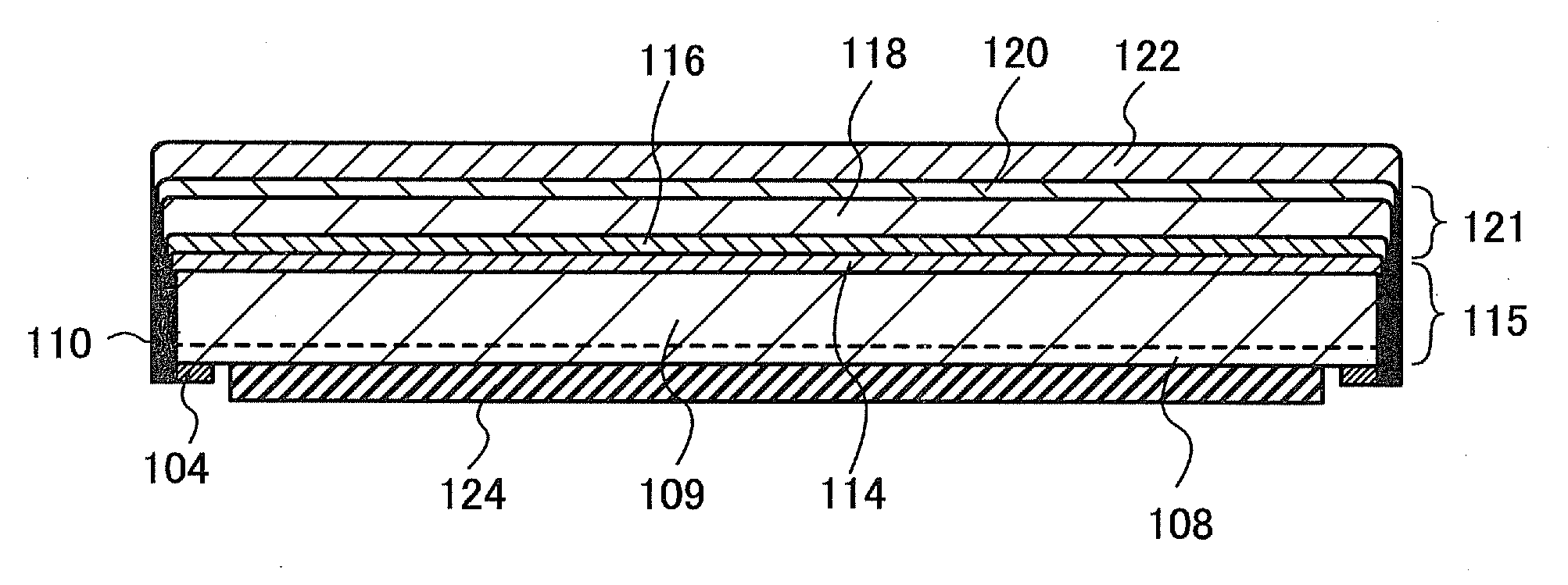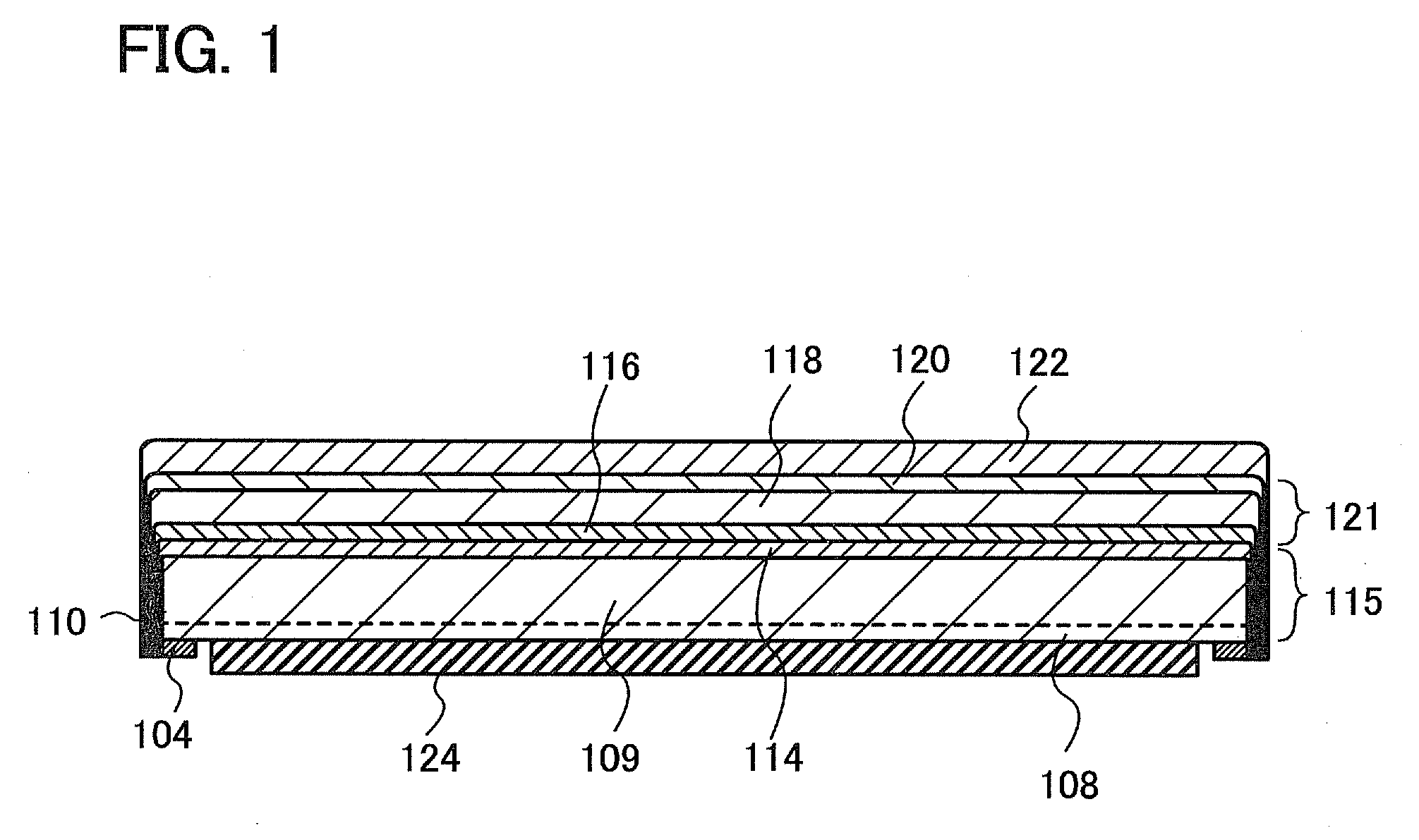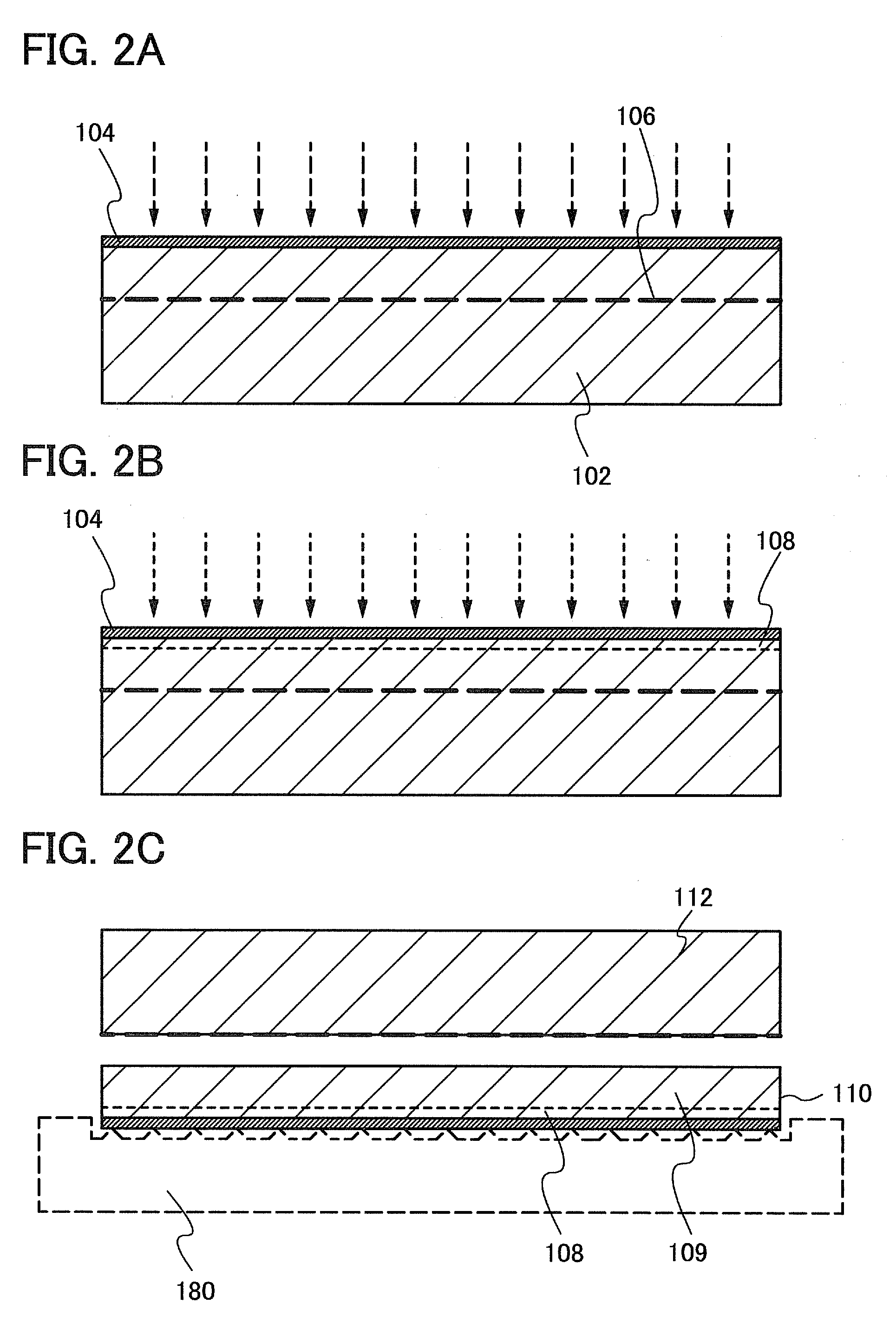Photoelectric conversion device and method for manufacturing the same
a conversion device and photoelectric technology, applied in the field of photoelectric conversion devices and methods for manufacturing the same, can solve the problems of reducing the bonding strength, the degree of adhesion in the adhesion portion or the change in the property of the electrode-forming paste serving as an adhesive becomes a problem, and the number and complexity of manufacturing steps or process temperatures are limited, so as to achieve resource-saving photoelectric conversion, the effect of reducing the amount of a single crystal semiconductor material and reducing the amount o
- Summary
- Abstract
- Description
- Claims
- Application Information
AI Technical Summary
Benefits of technology
Problems solved by technology
Method used
Image
Examples
embodiment 1
[0055]In this embodiment, a method for manufacturing a photoelectric conversion device and a structure of the manufactured photoelectric conversion device, are described with reference to drawings. In the photoelectric conversion device in this embodiment, a bottom cell is formed using a thin single crystal semiconductor layer obtained by detaching thin part of a single crystal semiconductor substrate and a top cell is formed in which a non-single-crystal semiconductor layer is present over the thin single crystal semiconductor layer.
[0056]FIG. 1 shows an example of a cross-sectional view of a photoelectric conversion device according to the present invention.
[0057]A photoelectric conversion device described in this embodiment is provided with a stacked structure of a first unit cell 115 having a single crystal semiconductor layer and a second unit cell 121 having a non-single-crystal semiconductor layer. The stacked structure of the first unit cell 115 and the second unit cell 121 ...
embodiment 2
[0134]In this embodiment, an example of a method for manufacturing a photoelectric conversion device which is different from that described in the above embodiment will be described. Specifically, a method for forming a modified region in a single crystal semiconductor substrate as an embrittled layer by utilizing multiphoton absorption is described. Note that the same portions as in the above embodiment are denoted by the same reference numerals, and explanation thereof will be omitted or partially simplified.
[0135]In Embodiment 1, a mode is described with reference to FIG. 2A in which the embrittled layer 106 is formed in the single crystal semiconductor substrate 102 at a predetermined depth by irradiation with ions (typically hydrogen ions) accelerated by voltage and then the single crystal semiconductor substrate 102 is divided at the embrittled layer 106 by heat treatment to obtain the thin single crystal semiconductor layer 110, which is detached thin part of a single crystal...
embodiment 3
[0162]In this embodiment, an example of a structure of a photoelectric conversion device which is different from that in the above embodiments and a method for manufacturing the photoelectric conversion device having the structure will be described. Specifically, a structure is described in which a surface is provided with an anti-reflection structure (a structure of depressions and projections). Further, in this embodiment, an example is described in which a single crystalline silicon substrate is used as the single crystal semiconductor substrate 102. Note that the description of a portion which overlaps with the above embodiments is omitted or partially simplified.
[0163]As shown in FIG. 8A, surfaces of a single crystal silicon substrate 1002 are etched utilizing the fact that silicon is etched using an alkaline solution at different etching rates according to the orientation of crystal planes. By the etching, minute depressions and projections are formed in the surfaces of the si...
PUM
 Login to View More
Login to View More Abstract
Description
Claims
Application Information
 Login to View More
Login to View More - R&D
- Intellectual Property
- Life Sciences
- Materials
- Tech Scout
- Unparalleled Data Quality
- Higher Quality Content
- 60% Fewer Hallucinations
Browse by: Latest US Patents, China's latest patents, Technical Efficacy Thesaurus, Application Domain, Technology Topic, Popular Technical Reports.
© 2025 PatSnap. All rights reserved.Legal|Privacy policy|Modern Slavery Act Transparency Statement|Sitemap|About US| Contact US: help@patsnap.com



